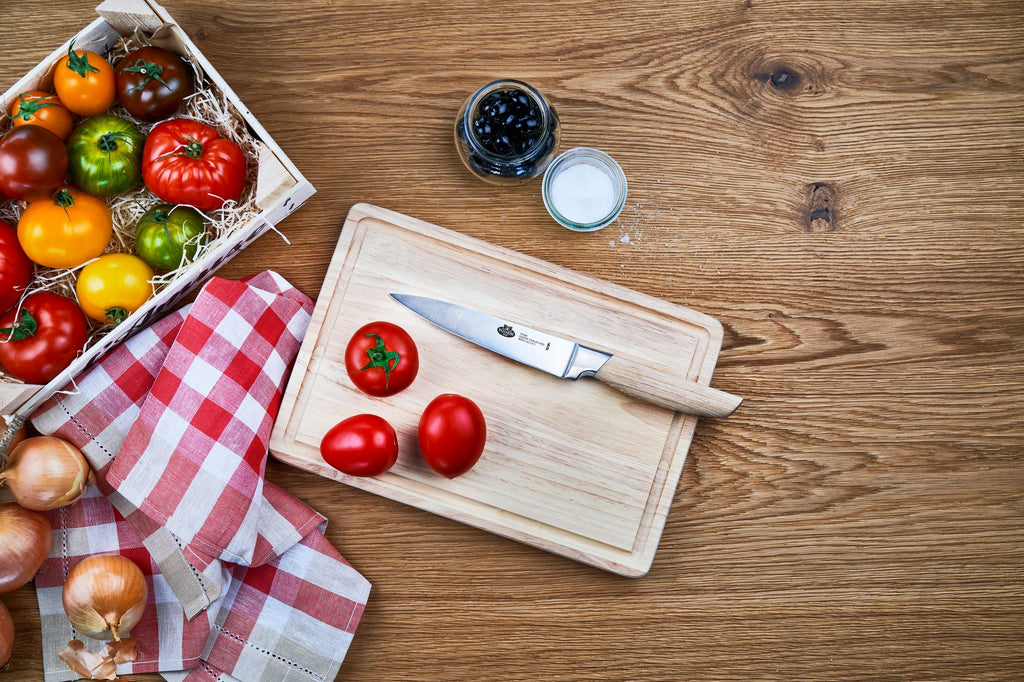In the realm of culinary art, the importance of a knife cannot be overstated. For kitchen professionals, the knife is more than just a tool; it is an extension of their skill and creativity. Among the myriad of knife options available, German knife handle designs have consistently stood out for their meticulous craftsmanship and innovation. Understanding the nuances of these designs can significantly enhance a chef's performance in the kitchen.

The Importance of Knife Handle Design
When we talk about knives, the focus often tends to be on the blade. However, the handle is equally crucial. A well-designed handle provides comfort, balance, and control, making it easier to execute precise cuts and reducing the risk of accidents. This is where German craftsmanship comes into play.
German knife makers have mastered the art of integrating ergonomic designs with high-quality materials to produce handles that are not only aesthetically pleasing but also highly functional. This attention to detail ensures that chefs can work for extended periods without experiencing fatigue.
Key Features of German Knife Handle Designs
So, what sets German knife handle designs apart? Lets delve into some of the key features that make them a favorite among kitchen professionals:
1. Ergonomic Excellence
German knife handles are renowned for their ergonomic excellence. They are designed to fit comfortably in the hand, reducing strain during prolonged use. The contour of these handles aligns with the natural grip, allowing for a more secure hold.
For instance, the handles often feature a slight curve that follows the natural curve of the fingers. This design minimizes hand fatigue and enhances the overall cutting experience. You can learn more about the ergonomic benefits of German knives in our article on What Chefs Say About German Knives.
2. Material Mastery
Another hallmark of German knife handle designs is the use of high-quality materials. Common materials include robust woods like walnut and ash, as well as synthetic materials such as polyoxymethylene (POM). These materials are chosen for their durability, resistance to moisture, and ability to maintain a secure grip even when wet.
The choice of material not only affects the durability of the knife but also its weight and balance, which are crucial for precision work in professional kitchens.
3. Balance and Weight
Balance is a critical factor in a knifes performance. German knife handles are meticulously crafted to ensure that the knife is perfectly balanced. This balance makes it easier to handle the knife, providing a sense of control and stability.
Weight is another consideration. German knives tend to be heavier, which can be advantageous for certain tasks like cutting through dense vegetables or meats. This heft, combined with a well-balanced handle, provides a powerful yet controlled cutting experience. For more insights on the balance and weight of German knives, visit our detailed German Knife Hardness Scale article.
The Craftsmanship Behind German Knife Handles
The craftsmanship behind German knife handles is a blend of tradition and innovation. German manufacturers, such as Wsthof and Zwilling, have honed their skills over centuries, marrying age-old techniques with modern technology.
Each handle is crafted with precision, ensuring that it meets the high standards set by German knife makers. This dedication to quality is evident in the longevity and performance of their knives.
Choosing the Right German Knife Handle
For kitchen professionals looking to invest in a German knife, understanding the various handle designs and materials is crucial. Its important to choose a handle that complements your style and meets your specific needs.
Consider factors such as the type of material, the design of the handle, and how it feels in your hand. Remember, the right handle can significantly enhance your efficiency and comfort in the kitchen.
For a detailed comparison of popular German knife brands and their handle designs, check out our comprehensive guide on German Knife Brands Comparison.

FAQ: Common Questions About German Knife Handle Designs
1. What materials are commonly used in German knife handles?
German knife handles commonly use materials such as high-quality woods like walnut and ash, as well as durable synthetic materials like polyoxymethylene (POM). These materials are chosen for their durability and ability to provide a secure grip.
2. How do I maintain my German knife handle?
Regular cleaning and proper storage are essential to maintain your German knife handle. Avoid soaking wooden handles in water and ensure they are dried thoroughly after washing. Use a mild soap and a soft cloth for cleaning, and consider applying mineral oil to wooden handles periodically. For detailed maintenance tips, visit How to Clean Your Wsthof Knives.
3. What is the advantage of an ergonomic handle design?
An ergonomic handle design reduces hand fatigue and provides comfort during prolonged use. It aligns with the natural grip of the hand, ensuring a secure hold and improving cutting precision.
By choosing the right German knife handle design, kitchen professionals can enhance their culinary skills and enjoy a more comfortable cooking experience.


























